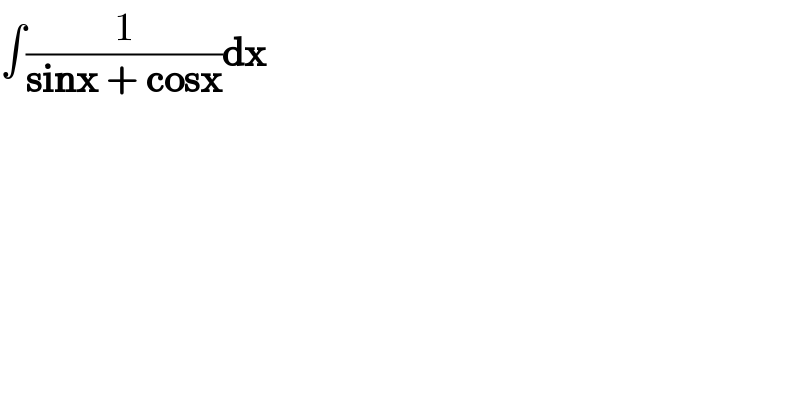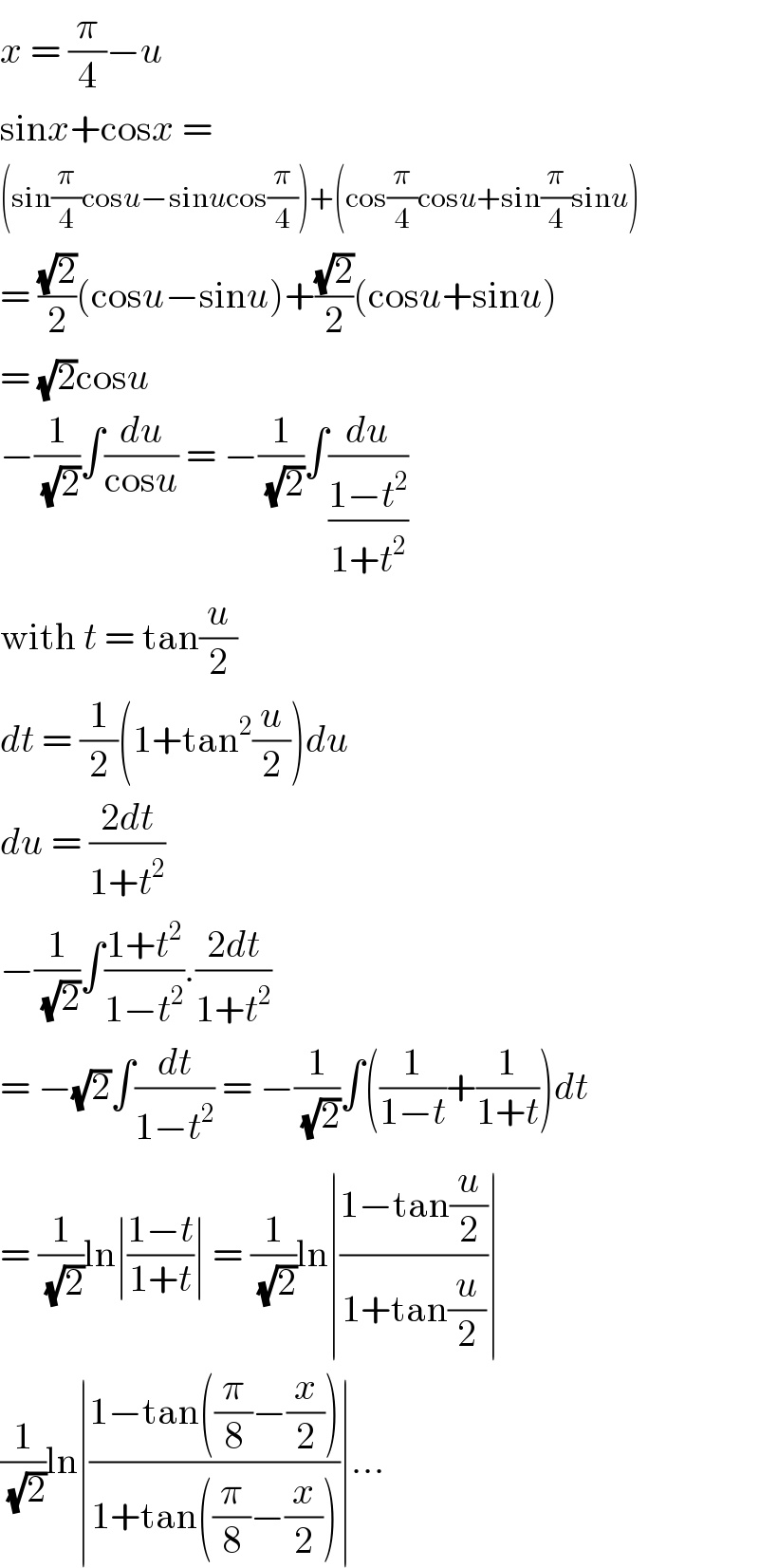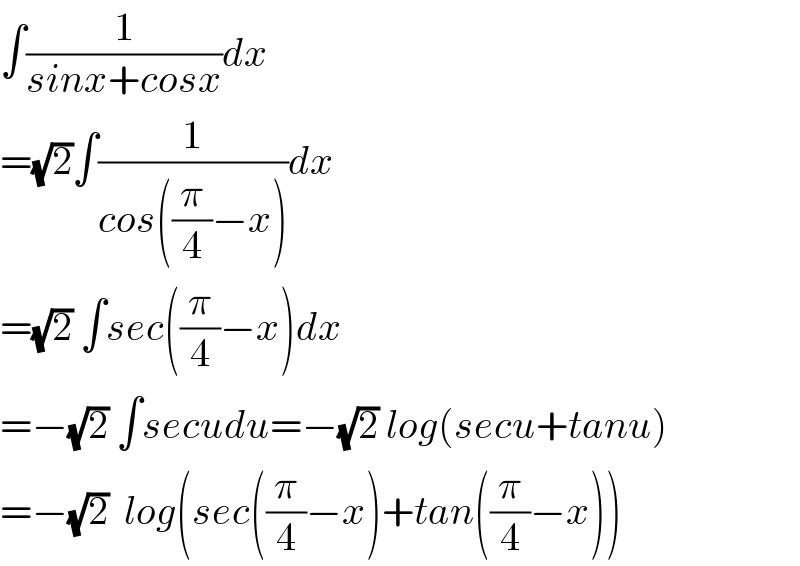
Question and Answers Forum
Question Number 114072 by Lordose last updated on 17/Sep/20

Answered by Olaf last updated on 17/Sep/20

Answered by MJS_new last updated on 17/Sep/20
![∫(dx/(sin x +cos x))= [t=x+(π/4) → dx=dt] =((√2)/2)∫csc t dt=((√2)/2)ln ∣tan (t/2)∣= =((√2)/2)ln ∣tan ((x/2)+(π/8))∣= =((√2)/2)ln ∣(((√2)+2sin x)/( (√2)+2cos x))∣ +C](Q114120.png)
Answered by Dwaipayan Shikari last updated on 17/Sep/20

Commented by MJS_new last updated on 17/Sep/20

